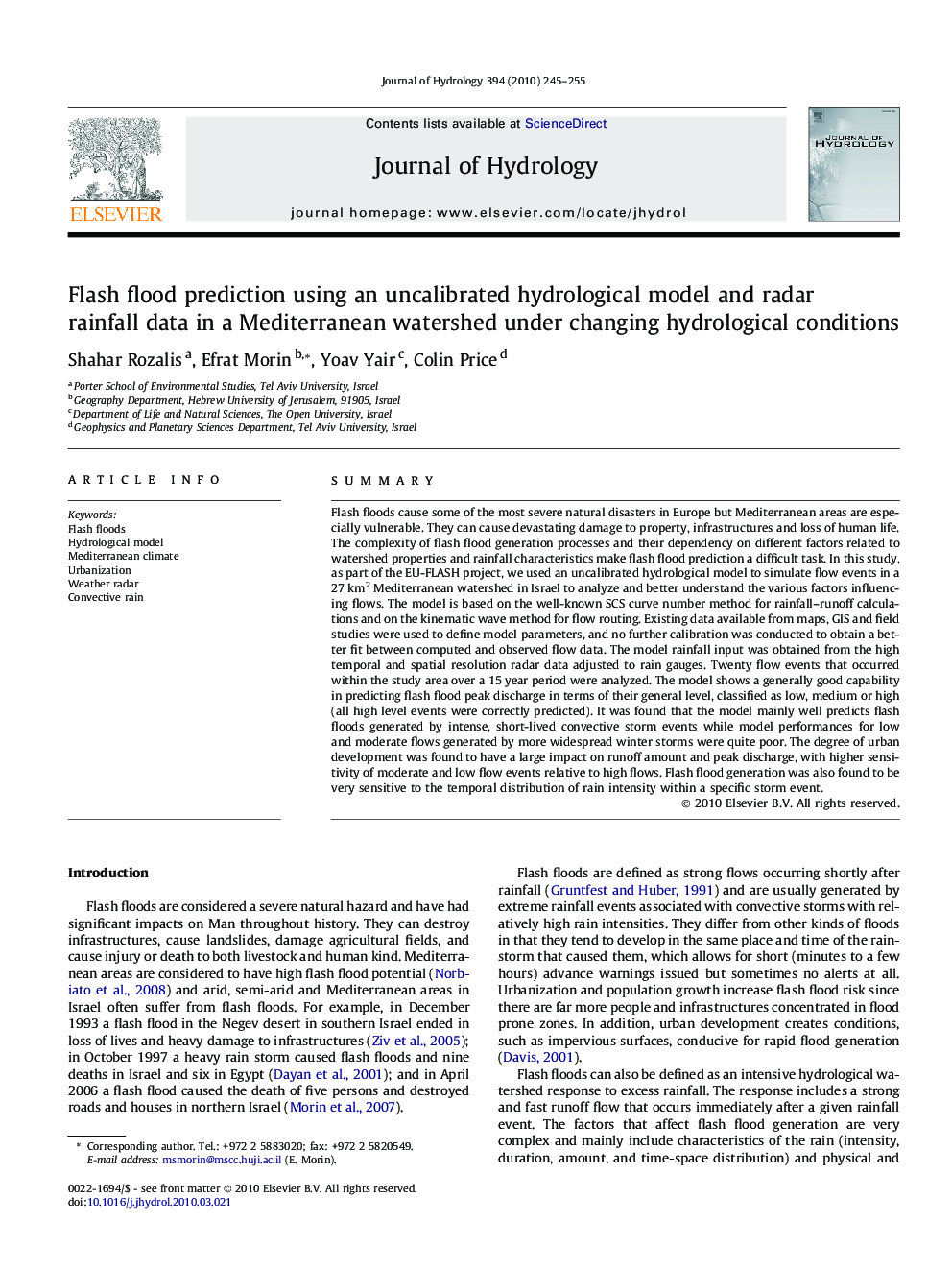| کد مقاله | کد نشریه | سال انتشار | مقاله انگلیسی | نسخه تمام متن |
|---|---|---|---|---|
| 6414066 | 1630040 | 2010 | 11 صفحه PDF | دانلود رایگان |

SummaryFlash floods cause some of the most severe natural disasters in Europe but Mediterranean areas are especially vulnerable. They can cause devastating damage to property, infrastructures and loss of human life. The complexity of flash flood generation processes and their dependency on different factors related to watershed properties and rainfall characteristics make flash flood prediction a difficult task. In this study, as part of the EU-FLASH project, we used an uncalibrated hydrological model to simulate flow events in a 27Â km2 Mediterranean watershed in Israel to analyze and better understand the various factors influencing flows. The model is based on the well-known SCS curve number method for rainfall-runoff calculations and on the kinematic wave method for flow routing. Existing data available from maps, GIS and field studies were used to define model parameters, and no further calibration was conducted to obtain a better fit between computed and observed flow data. The model rainfall input was obtained from the high temporal and spatial resolution radar data adjusted to rain gauges. Twenty flow events that occurred within the study area over a 15Â year period were analyzed. The model shows a generally good capability in predicting flash flood peak discharge in terms of their general level, classified as low, medium or high (all high level events were correctly predicted). It was found that the model mainly well predicts flash floods generated by intense, short-lived convective storm events while model performances for low and moderate flows generated by more widespread winter storms were quite poor. The degree of urban development was found to have a large impact on runoff amount and peak discharge, with higher sensitivity of moderate and low flow events relative to high flows. Flash flood generation was also found to be very sensitive to the temporal distribution of rain intensity within a specific storm event.
Journal: Journal of Hydrology - Volume 394, Issues 1â2, 17 November 2010, Pages 245-255